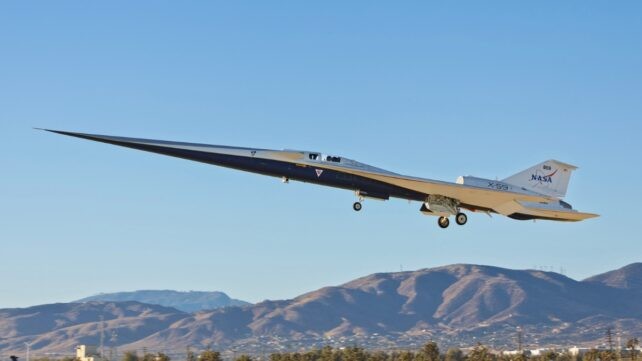When Silence Takes Flight: NASA’s Quiet Supersonic Dream Takes Off
From Palmdale, California, Lockheed Martin Skunk Works, in partnership with NASA, flew the X-59 for its first test. The mission was subsonic, but it marks a watershed seven-year effort to reintroduce civilian supersonic travel without the deafening sonic booms of the past. The X-59 is designed to reduce sonic booms to gentle thumps—an idea that could transform how people travel, if the public accepts the new sound.

In This Article:
A Subsonic Milestone: The X-59's First Flight Details
The takeoff occurred at 8:14 a.m. PT on October 28 from Skunk Works in Palmdale. The flight lasted 1 hour and 7 minutes and ended at Edwards Air Force Base. Pilot Nils Larson climbed to about 12,000 feet, performing basic handling checks at speeds up to 250 knots. The X-59 measures 99.7 feet in length with a 29.5-foot wingspan and a projected top speed of Mach 1.4. Aviation Week reported that the flight went exactly as planned. Lockheed Martin said the X-59 ‘performed exactly as planned, verifying initial flying qualities and air data performance on the way to a safe landing at its new home.’

The Design: How the X-59 Dims the Sonic Boom
Its needle nose, shockwave-smoothing fuselage and top-mounted engine are engineered to minimize sonic-boom intensity. The aircraft’s shape is specifically designed to produce a far gentler sonic event over the ground. “We are thrilled to achieve the first flight of the X-59,” said OJ Sanchez, Skunk Works’ vice president and general manager. “This aircraft is a testament to the innovation and expertise of our joint team, and we are proud to be at the forefront of quiet supersonic technology development.”

What Comes Next: Testing, Sound Signatures, and Public Acceptance
Over the coming months, Skunk Works will lead the initial test campaign with NASA to expand the X-59’s flight envelope and perform transonic and supersonic tests. In later stages, NASA will operate the X-59 to measure its sound signature and gauge community acceptance. The project sits in a broader context: in June, a presidential executive order lifted the ban on commercial supersonic flights over U.S. soil. Industry developments include Boom Supersonic’s XB-1 tests and its 2027 target for the first flight of the full-scale Overture; Spike Aerospace is developing the S-512 Diplomat; and two other startups, Aerion and Exosonic, had to shut down for funding reasons.

A Quiet Revolution in Aviation? The Future of Civilian Supersonic Travel
If the X-59 proves that quiet supersonic flight is not only possible but publicly acceptable, it could spark a new era in aviation. As Acting NASA Administrator Sean Duffy put it, “The American spirit knows no bounds. It's part of our DNA—the desire to go farther, faster and even quieter than anyone has ever gone before.” “This work sustains America’s place as the leader in aviation and has the potential to change the way the public flies.” The coming years will test whether governments, communities, and airlines are ready for a future where ground-level booms are a thing of the past—and where faster-than-sound travel could finally arrive.

